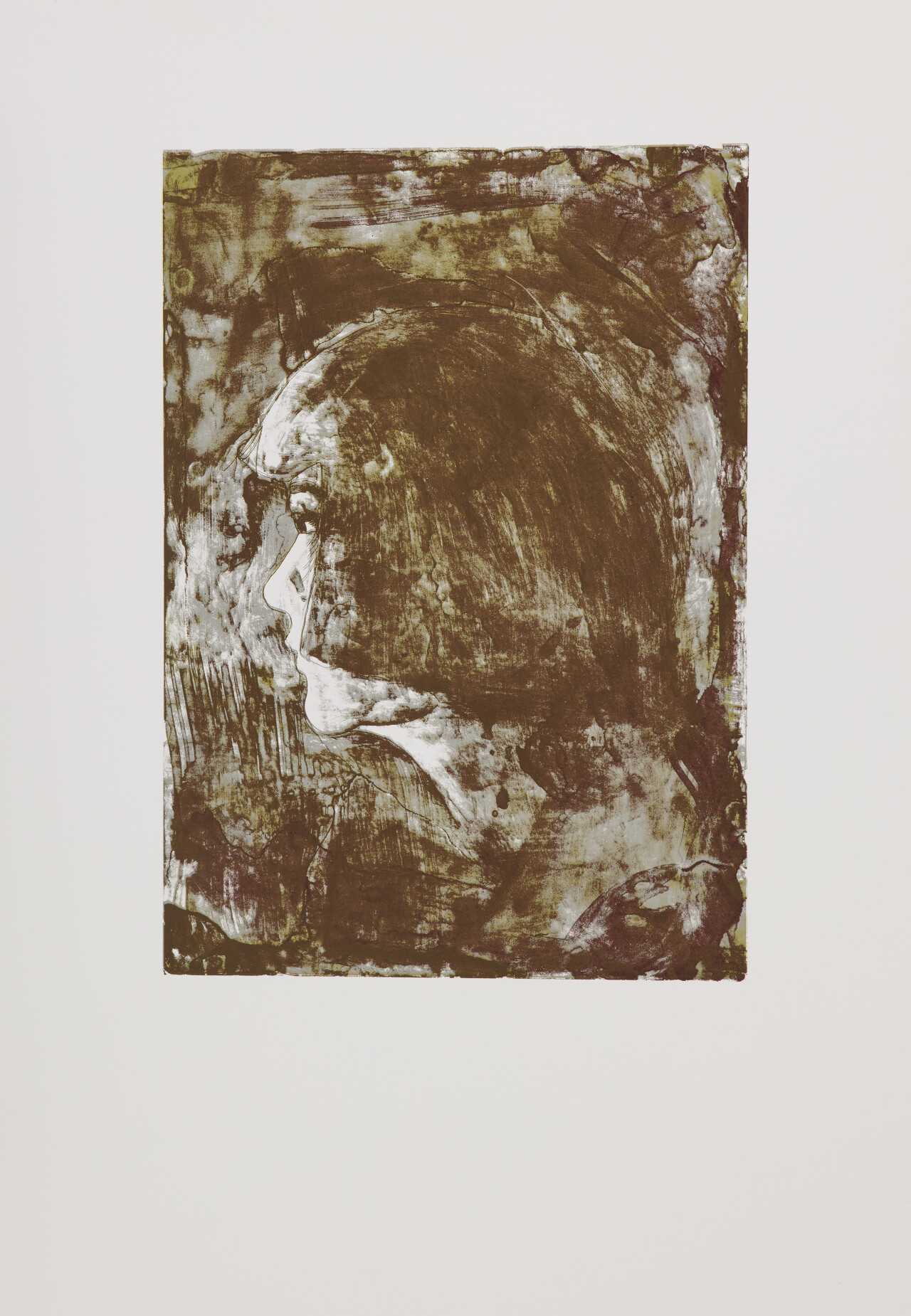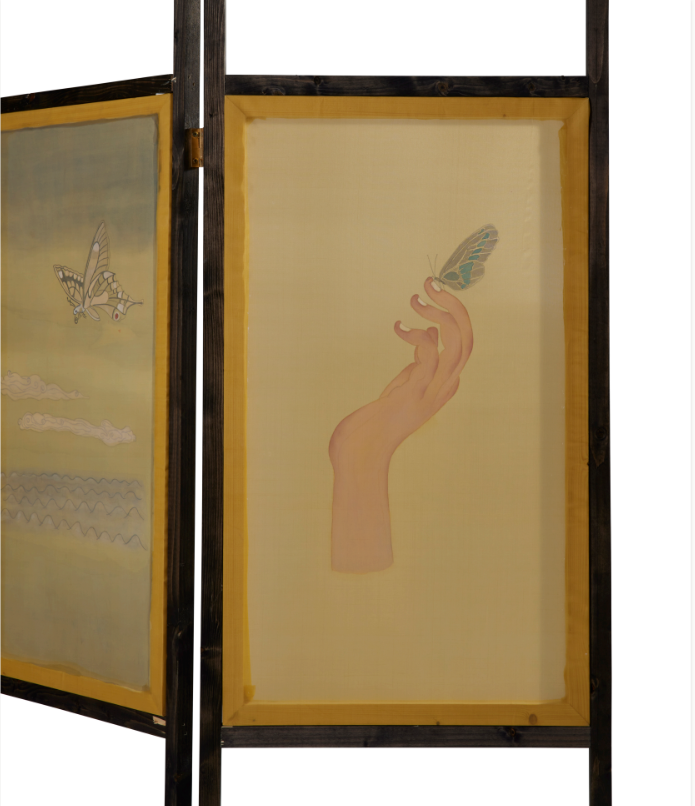Music for a While
Music for a While is a project in memory of my mother. The works subtly reference my mother’s short-lived singing career in pre-revolution China. The Music for a While is made up of self-portraits and depictions of the former singer Maria Callas. These works are manifested as drawings, prints, paintings on silk, a room divider that contains three ink drawings on silk screens, and a table of drawings and notes that act as a form of archive.
The characters in the works appear as if they are performing or acting dramatically to hint towards my mother’s short career on stage. The works presents the experience of a real and imagined persona before an audience. Blurring public and private space and using architectural components in the work, the balustrade in the large drawing piece is used to create the sense of a stage on which the characters are performing. The room divider carries three ink drawings on silk screens, and this type of furniture echoed the large drawing work, simultaneously reference a bedroom and a stage. The painted screen depicts a butterfly and a hand drawn with curved lines, the curved lines of the hand associated with metamorphosis and transformation, detachment, and tranquillity. The third screen is a self-portrait that articulates that I am part of this sense of spiritual awareness.
The large drawing piece creating a scene of a stage setting, balustrade and cornice framing the foreground and the top also referencing the theatre. Existing between the imaginative and realistic, the characters are looking “outward”, to engage with an audience.
The screen print works on paper are developed from three pencil self-portraits, their tone was inspired by the tragic love story La Traviata. Sensitive ink wash combines with line drawing, to make the image that falls between the realistic, subjective, and imaginative.

